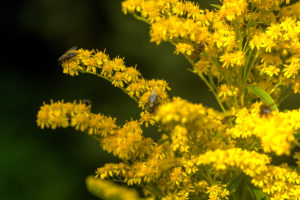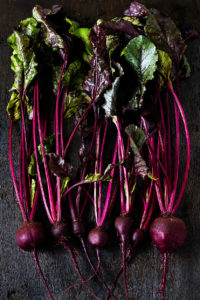Hypertension: A Natural Approach
By: Dustin Moffitt, ND
What is Hypertension?
Hypertension, or high blood pressure, is a very common health condition in the adult population. While hypertension may be “common”, it is not a topic to be taken lightly. According to the Center for Disease Control and Prevention, one third of adults in the United States have high blood pressure, and only 54% of them with hypertension have it under control.
Blood pressure is created by the force of blood pushing against the walls of your arteries and veins as your heart pumps to distribute blood throughout your body. Increased blood pressure occurs when your heart has to work harder to distribute blood to the body. This increase in work is often caused by damage to, or blockages of, the arteries and veins. The harder your heart must work to distribute blood, the greater the odds are of having a heart attack, heart failure, stroke, kidney failure, or vision loss.
Signs, Symptoms, and Diagnosis
On rare occasions, a person may experience headaches characterized by nausea or vomiting when they have high blood pressure. However,  hypertension is often known as the “silent killer”, having little or no warning signs or symptoms. Due to its lack of warning, it is important to check your blood pressure regularly.
hypertension is often known as the “silent killer”, having little or no warning signs or symptoms. Due to its lack of warning, it is important to check your blood pressure regularly.
Blood pressure is measured using two sets of numbers: systolic and diastolic. Systolic is the measurement of the pressure in your blood vessels that is created when the heart pumps blood from its ventricles to the body. Diastolic is the measurement of the amount of pressure within your blood vessels while the heart is resting in between beats or ejections. A complete blood pressure value is stated as a ratio of systolic pressure to diastolic pressure.
Increased moments of stress, high caffeine levels, lack of sleep, or other temporary conditions can alter a blood pressure reading. Clinical hypertension occurs when an individual has two or more blood pressure values containing a systolic value over 140 mmHg or a diastolic value over 80 mmHg within the past three blood pressure readings.
The table below illustrates the latest blood pressure guidelines released by the American Heart Association[i]. A normal blood pressure value contains a systolic pressure of less than 120 mmHg and a diastolic pressure of less than 80 mmHg.
| Blood Pressure Levels | |
| Normal | systolic: less than 120 mmHg diastolic: less than 80mmHg |
| At risk (prehypertension) | systolic: 120–139 mmHg diastolic: 80–89 mmHg |
| Hypertension Stage 1 | systolic: 140-159 mmHg or higher diastolic: 90-99 mmHg or higher |
| Hypertension Stage 2 | systolic: 160 mmHg or higher diastolic: 100 mmHg or higher |
| Hypertensive Crisis | systolic: 180 mmHg or higher diastolic: 100 mmHg or higher |
Why does hypertension develop?
High blood pressure develops for many reasons, and those reasons may not be the same for everyone. Certain genetic markers, such as MTHFR defects, COMT defects, and ApoE4 values, can play a role in this equation, leading to increased levels of homocysteine, catecholamines (stress hormones), or mitochondrial dysfunction. High stress can also cause our blood pressure to sky rocket, as stress causes our body to enter the “fight” response mode. Poor diet, especially the “Standard American Diet” (characterized by elevated levels of salt, sugar, inferior quality fats, low fiber intake, and lots of processed foods), has been strongly linked to increasing blood pressure. This diet tends to result in increased inflammation within the arteries and veins, as well as malnourished muscle fibers that allow the heart to contract and pump blood. Our heart and its vascular network are a system of muscles, and therefore need proper training and strengthening, just like every other muscle in our bodies. Lack of adequate exercise can also contribute to hypertension for this reason.
Treating blood pressure in real life.
Sometimes prescription medications are required to get the blood pressure back to safe ranges, but they do not always have to be a long-term solution, if other interventions are put in place. When the body can reduce its systolic pressure, the diastolic pressure decreases with it. Here are some proven ways to reduce hypertension, and decrease the need for lifelong medications.
- Weight reduction in clinically overweight individuals
- Increased fat distribution throughout the body puts undue stress on the arteries and veins, making it harder to push blood through them.
- On average, for every 2 pounds of body weight lost, systolic drops by 1 mmHg and results in diastolic drops as well.[ii]
- This means that for every 10 lbs. of fat loss, you can decrease your systolic value by 5 mmHg!
- Adopting a DASH diet or Mediterranean diet
- Both diets can reduce blood pressure to levels that can be achieved by drug therapy in patients with mild hypertension.
- Bottom line: Eat more vegetables, eat some fruit, and return to a whole foods diet. Consume 31 grams of dietary fiber daily, 8-10 servings of vegetables and some fruits each day.
- Sodium Reduction
- Consume less than 2,000 mg of sodium per day and increase potassium and magnesium in the diet.[iii]
- Increase Physical activity
- The American Heart Association recommends 30-45 minutes of aerobic exercise 3 times per week and 30-45 minutes of resistance or weight lifting 3 times per week.
- Moderation of alcohol consumption and caffeine
- Both act as diuretics (causing an increase in urine production), resulting in a decrease in blood volume. They can lead to more inflammation within the blood vessels. This means the heart must pump a smaller amount of blood faster and harder through swollen vessels to distribute nutrients throughout the body.
- Stop smoking
- Smoking leads to lose of oxygen to our tissues due to damaging our small vascular system and leads to excessive inflammation.[iv]
- Stress reduction
- Restructure the way you view stress.
- Utilize proper, slow belly breathing techniques to calm your body in moments of stress.[v]
In addition to the above-mentioned lifestyle modifications, there are several natural ways to help decrease blood pressure in the body. By incorporating healthy and essential nutrients into our diets, we can strengthen our vasculature and muscles, and therefore decrease blood pressure.
Diuretics
Parsley (root) – Acts as a mild diuretic and helps us detoxify.
Dandelion (leaf) – Dandelion is potassium-sparing diuretic.
Spearmint – Cooling and soothing, offers some aide in stomach aches and has mild diuretic properties.
Fennel – Common cooking spice in the form of a seed that offers soothing properties such as stomach aide, smooth muscle relaxant, and mild diuretic.
Chicory – A bitter root that is often used to enhance the flavor of coffee as it is very nutritive, cooling, and helps improve the liver and kidneys’ function by improving detoxification, digestion, and diuretic.
Corn Silk – A nourishing and stimulating part of corn that we typically disregard. This can be used as a mild diuretic, but also offers aide in many urinary issues such as kidney stones, interstitial cystitis and prostatitis.
Goldenrod (flowers) – This is helpful to those of us here in Kansas as it grows abundantly, and is a diuretic that does not lead to electrolyte loss.
Vasodilators
L-arginine – An amino acid, which is a precursor to nitric oxide (an extremely potent vasodilator), helps to reduce blood pressure. Food-based sources are nuts and seeds and red beets.
Anti-hypertensives
Alpha lipoic acid – Considered a great “recycler” as it helps us recirculate our blood and tissue levels of vitamins and many of our antioxidants (including glutathione, cysteine, vitamin C and vitamin E).
Coenzyme Q10 – Helps our body run more efficiently in producing energy in our mitochondria. It has been linked to reduction of both systolic and diastolic blood pressures of 11-12% each.[vi]
Vitamin E – Studies have shown reduction of blood pressure, this is done by the reduction of lipid peroxides, increase of superoxide dismutase activity and increase of overall antioxidant activity.[vii]
Celery – Consuming four stalks of celery per day or eight teaspoons of celery juice three times daily seems to have an antihypertensive effect.[viii]
Pine bark (Pinus radiata) – Leads to significant reduction in the means of body weight, percent body fat, systolic blood pressure, and plasma viscosity.[ix][x]
Other Useful Nutrients and Botanicals.
Omega-3 Fatty Acids– Help reduce the amount of oxidative stress on the vascular system by reducing the actions of inflammatory  metabolites known as arachidonic acid prostaglandins. Benefits from this are very dose dependent, as doses of less than 4 grams per day show little to no change on hypertension.
metabolites known as arachidonic acid prostaglandins. Benefits from this are very dose dependent, as doses of less than 4 grams per day show little to no change on hypertension.
Potassium, Magnesium, Calcium – All crucial minerals to our body’s ecosystem. These can help balance our sodium levels in the tissues and help our energy levels. They can also aide in the elimination of toxins or metabolic byproducts in the body.
Vitamin C and Garlic – One study theorized that garlic and vitamin C might lower blood pressure by increasing nitric oxide endothelial cells, which causes muscles surrounding the blood vessels to relax. Using endothelial cells, scientists administered garlic and found a twofold increase in nitric oxide. After administering garlic and vitamin C together, they observed a threefold increase in nitric oxide[xi].
Vitamin B6 – Treatment of hypertensive patients with pyridoxine significantly reduced systolic and diastolic blood pressure, plasma norepinephrine, and epinephrine within 4 weeks.[xii]
Basil – Adaptogenic herb, meaning it helps us adapt to many things in life, particularly helping us calm down from stress. It also has properties of being an antioxidant and is a reliable source for vitamins A, and C, and provides calcium, iron, zinc and chlorophyll.
Cinnamon – Aids in lowering blood sugar by increasing our cells’ sensitivity to insulin, which can help lead to the lowering of cholesterols such as LDL and triglycerides.

Ginger – A potent blood thinner and anti-inflammatory agent.
Cayenne – Capsaicin is also an antioxidant known to reduce lipid oxidation and decrease platelet stickiness.
Hawthorn– A very strong cardio-protective plant that aides in strengthening collagen fibers, vasodilating and improving heart function by means of high antioxidants.
Hypertension is nothing to overlook. If left untreated, it can lead to long-term complications. The natural approaches here are listed as an educational resource only and should not be considered as medical advice. Please feel free to ask your doctor about these therapies as individual or adjunctive treatments for high blood pressure. As always, we here at the Riordan clinic are here for you.
[i] American Heart Association. https://www.heart.org/HEARTORG/Conditions/HighBloodPressure/GettheFactsAboutHighBloodPressure/The-Facts-About-High-Blood-Pressure_UCM_002050_Article.jsp
[ii] PMID: 23101095
[iii] 6. Eckel RH, Jakicic JM, Ard JD, Hubbard VS, de Jesus JM, Lee I-M, Lichtenstein AH, Loria CM, Millen BE, Houston Miller N, Nonas CA, Sacks FM, Smith SC Jr, Svetkey LP, Wadden TW, Yanovski SZ. 2013 AHA/ACC guideline on lifestyle management to reduce cardiovascular risk: a report of the American College of Cardiology/American Heart Association Task Force on Practice Guidelines. Circulation. 2013: published online before print November 12, 2013, 10.1161/01.cir.0000437740.48606.d1.
[iv] Takami T, Saito Y. Effects of smoking cessation on central blood pressure and arterial stiffness. Vascular Health and Risk Management. 2011;7:633-638. doi:10.2147/VHRM.S25798.
[v] Wright LB, Gregoski MJ, Tingen MS, Barnes VA, Treiber FA. Impact of Stress Reduction Interventions on Hostility and Ambulatory Systolic Blood Pressure in African American Adolescents. The Journal of black psychology. 2011;37(2):210-233. doi:10.1177/0095798410380203.
[vi] Digiesi V, Cantini F, Oradei A, Bisi G, Guarino GC, Brocchi A, Bellandi F, Mancini M, Littarru GP. Coenzyme Q-10 in essential hypertension. Mol Aspects Med. 1994;15:S257-S263
[vii] Newaz MA, Nawal NNA. Effect of gamma-tocotrienol on blood pressure, lipid peroxidation and total antioxidant status in spontaneously hypertensive rats (SHR). Clin Exp Hypertens. 1999;21:1297-1313.
[viii] Houston, Mark. The Role of Vascular Biology, Nutrition and Nutraceuticals in the Prevention and Treatment of Hypertension. JANA April 2002
[ix] Shand, B., Strey, C., Scott, R., Morrison, Z. and Gieseg, S. (2003), Pilot study on the clinical effects of dietary supplementation With Enzogenol®, a flavonoid extract of pine bark and vitamin C. Phytother. Res., 17: 490–494. doi:10.1002/ptr.1181
[x] Joanna M. Young, Brett I. Shand, Patrice M. McGregor, Russell S. Scott & Christopher M. Frampton. Comparative effects of enzogenol and vitamin C supplementation versus vitamin C alone on endothelial function and biochemical markers of oxidative stress and inflammation in chronic smokers. Free Radical Research Vol. 40, Iss. 1,2006.
[xi] Nutr Res. 2007;27(2):119-23.
[xii] Aybak M, Sermet A, Ayyildiz MO, Karakilçik AZ. Effect of oral pyridoxine hydrochloride supplementation on arterial blood pressure in patients with essential hypertension. Arzneimittelforschung. 1995;45(12):1271-3.





